Fusion SG-DA82000 Handleiding
Bekijk gratis de handleiding van Fusion SG-DA82000 (14 pagina’s), behorend tot de categorie Receiver. Deze gids werd als nuttig beoordeeld door 94 mensen en kreeg gemiddeld 4.3 sterren uit 47.5 reviews. Heb je een vraag over Fusion SG-DA82000 of wil je andere gebruikers van dit product iets vragen? Stel een vraag
Pagina 1/14

®
SG-DA82000 Signature Series
Amplifier Installation Instructions
Important Safety Information
WARNING
See the guide in the Important Safety and Product Information
product box for product warnings and other important
information.
WARNING
This device must be installed according to these instructions.
Disconnect the vehicle's or vessel's power supply before
beginning to install this device.
CAUTION
To maintain ignition protection compliance in accordance with
SAE J1171, you must replace the fuse only with a J1171
compliant fuse.
Continuous exposure to sound pressure levels over 100 dBA
may cause permanent hearing loss. The volume is typically too
loud if you cannot hear people speaking around you. Limit the
amount of time you listen at high volume. If you experience
ringing in your ears or muffled speech, stop listening and have
your hearing checked.
Always wear safety goggles, ear protection, and a dust mask
when drilling, cutting, or sanding.
NOTICE
When drilling or cutting, always check what is on the opposite
side of the surface.
This device is designed for a 12 Vdc power source. Connecting
to a 24 Vdc or larger power source may damage the device.
It is strongly recommended that you have your audio system
installed by a professional installer to ensure optimum
performance.
You must read all installation instructions before beginning the
installation. If you experience difficulty during the installation, go
to for product support.www.fusionentertainment.com
What's In the Box
• Four 8-gauge, self-tapping screws
• 3 mm hex key (for the top cover and power terminals)
• 2.5 mm hex key (for the speaker terminals)
• Polishing cloth
• Spare J1171 compliant 40 A blade-type fuses
Tools Needed
• Drill and drill bits
• Flat screwdriver
• Wire cutter
• Wire stripper
• 160 A inline fuse for the power cable
• 4 AWG (21.1 mm2) power cable
NOTE: You may need thicker cable for higher amperages or
longer runs ( ).Power Cable Gauge Guide, page 2
• 16 AWG (1.31 mm2) speaker wire
NOTE: You may need thicker wire for longer runs (Speaker
Wire Gauge Guide, page 3).
• 20 AWG (0.52 mm2) wire (amplifier turn-on signal)
• Dual RCA cable (1 per zone, for stereo speakers) (Signal and
Speaker Connection Considerations, page 3)
• Single RCA cable and RCA splitter (1 per zone, for mono
subwoofer or bridged output for speakers) (Signal and
Speaker Connection Considerations, page 3)
• Cable ties (optional)
Mounting Considerations
CAUTION
In high ambient temperatures and after extended use, the
device enclosure may reach temperatures deemed dangerous
to touch. Therefore the device must be installed in a location
where it will not be touched during operation.
NOTICE
This device should be mounted in a location that is not exposed
to extreme temperatures or conditions. The temperature range
for this device is listed in the product specifications. Extended
exposure to temperatures exceeding the specified temperature
range, in storage or operating conditions, may cause device
failure. Extreme-temperature-induced damage and related
consequences are not covered by the warranty.
This device is designed for installation only in a dry location.
Installing this device in a location where it may come in contact
with water or become submerged may result in damage. Water
damage is not covered by the warranty.
• The device must be mounted in a location that does not
interfere with the fuel tank or electrical wiring.
• The device must be mounted in a location where it is not
exposed to water.
• The device must be mounted in a location with adequate
ventilation where it is not exposed to extreme temperatures.
• If the device is mounted in an enclosed space, you should
install a cooling fan with appropriate ducts to aid in airflow.
• The device should be mounted so that the cables can be
connected easily.
• To avoid interference with a magnetic compass, the device
should be installed at least 50 cm (20 in.) away from a
compass.
• The device should not be mounted in close proximity to other
navigation-critical equipment, antennas, or radio-
communication equipment on the vessel.
Mounting the SG-DA82000 Signature Series Device
NOTICE
If you are mounting the device in fiberglass, when drilling the
pilot holes, it is recommended to use a countersink bit to drill a
clearance counterbore through only the top gel-coat layer. This
will help to avoid cracking in the gel-coat layer when the screws
are tightened.
NOTE: Screws are included with the device, but they may not
be suitable for the mounting surface.
Before you mount the device, you must select a mounting
location and determine what screws and other mounting
hardware are needed for the surface.
1Place the device in the mounting location and mark the
location of the pilot holes.
2Drill a pilot hole for one corner of the device.
3Loosely fasten the device to the mounting surface with one
corner and examine the other three pilot-hole marks.
4Mark new pilot-hole locations if necessary, and remove the
device from the mounting surface.
5Drill the remaining pilot holes.
6Secure the device to the mounting location.
January 2019
190-02211-90_0A

Removing the Cover
You must remove the cover to reach the connectors and
configuration controls on the amplifier.
1Using the included 3 mm hex key, remove the screws that
secure the cover to the amplifier.
2Lift the cover off of the amplifier and set it aside until after you
have finished making all of the connections and configured
the amplifier.
Connection Considerations
NOTICE
The 12 Vdc wiring (not included) from the battery to the amplifier
must run through an inline fuse or circuit breaker (not included)
as close to the battery as possible. You must connect the +12V
(positive) wire to the fuse or circuit breaker. Connecting the
amplifier to power without an inline fuse or circuit breaker may
result in a fire if there is a short in the cable.
You must turn off the audio system before making any
connections to the amplifier. Failure to turn off the audio system
may result in damage to the audio system.
All terminals and connections must be protected from contact
with the vessel chassis and with each other. Improper terminal
or wire contact may result in damage to the audio system.
• You must first connect the amplifier to ground before making
any other wiring connections (Connecting to Power,
page 2).
• You must connect the +12V (positive) wire to the battery only
after you have completed all other wiring to the amplifier.
• If your stereo does not have a remote turn-on signal wire, you
must connect the amplifier to a switched 12 Vdc source.
Port Identification
Fuses. See the product specifications for replacement details.
POWER and PROT (protection) LED indicators (Troubleshooting,
page 5)
Zones 1 and 2 speaker terminals
Zones 1 and 2 RCA inputs
Power, ground, and amplifier turn-on terminals
Zones 3 and 4 RCA inputs
Zones 3 and 4 speaker terminals
Connecting to Power
You must connect the power wire to the battery through an in-
line fuse or a circuit breaker.
You must use the appropriate gauge of wire (not included) to
connect the amplifier to power and ground, based on the total
amperage and the length of the cable run (Power Cable Gauge
Guide, page 2).
1Route the appropriate gauge of wire to the amplifier and to a
ground location on the boat.
2Using the included 3 mm hex key, connect the ground wire to
the GND terminal on the amplifier.
3Connect the other end of the ground wire to the ground
location on the boat.
4Route the appropriate gauge of wire to the amplifier and to
the boat battery, and select an option:
• Install an in-line fuse on the power wire as close to the
battery as possible.
• Identify or install a circuit breaker, as close to the battery
as possible, for use with the amplifier power wire.
NOTICE
You must not connect the power wire to the amplifier and
battery or circuit breaker before you complete all of the other
connections. Connecting the amplifier to power before you
complete all of the other connections may cause damage to
your audio system.
5Select an option:
• If your stereo has an amplifier turn-on wire, route a
20 AWG (0.52 mm2) wire from the amplifier turn-on wire
on the stereo to the amplifier.
NOTE: The amplifier and the stereo must connect to the
same physical ground location for the amplifier turn-on
signal to function properly.
• If your stereo does not have an amplifier turn-on wire,
route a 20 AWG (0.52 mm2) wire from the positive
terminal of the battery, through a switch, to the amplifier.
6Using a the included 2.5 mm hex key, connect the 20 AWG
(0.52 mm2) wire to the REM terminal on the amplifier.
Make all of the other connections to the stereo and speakers
before completing the connection to power (Completing the
Connections, page 4).
Power Cable Gauge Guide
You should use 4 AWG (21.1 mm2) wire for most installations. If
your total amperage is higher than 50–65 A, and your cable run
is longer than 10–13 ft (3–4 m), you can use these tables to
determine if you need to use a larger gauge of wire. This table
accounts for terminal connection resistance.
NOTE: If you are using aluminum or tinned wire, you should use
a wire two gauges larger than the gauge listed below to
compensate for a potential voltage drop due to the wire material.
Total Amperage 0––4 ft.
(0–1.2 m)
4–7 ft.
(1.2–2.1 m)
7–10 ft.
(2.1–3 m)
10–13 ft.
(3–4 m)
85–105 A 4 AWG
(21.1 mm2)
4 AWG
(21.1 mm2)
4 AWG
(21.1 mm2)
2 AWG
(33.6 mm2)
105–125 A 4 AWG
(21.1 mm2)
4 AWG
(21.1 mm2)
4 AWG
(21.1 mm2)
2 AWG
(33.6 mm2)
125–150 A 2 AWG
(33.6 mm2)
2 AWG
(33.6 mm2)
2 AWG
(33.6 mm2)
0 AWG
(53.5 mm2)
Total Amperage 13–16 ft.
(4–4.9 m)
16–19 ft.
(4.9–5.8 m)
19–22 ft.
(5.8–6.7 m)
22–28 ft.
(6.7–8.5 m)
50–65 A 4 AWG
(21.1 mm2)
4 AWG
(21.1 mm2)
4 AWG
(21.1 mm2)
2 AWG
(33.6 mm2)
65–85 A 2 AWG
(33.6 mm2)
2 AWG
(33.6 mm2)
2 AWG
(33.6 mm2)
0 AWG
(53.5 mm2)
2 SG-DA82000 Signature Series Installation Instructions

Total Amperage 13–16 ft.
(4–4.9 m)
16–19 ft.
(4.9–5.8 m)
19–22 ft.
(5.8–6.7 m)
22–28 ft.
(6.7–8.5 m)
85–105 A 2 AWG
(33.6 mm2)
2 AWG
(33.6 mm2)
2 AWG
(33.6 mm2)
0 AWG
(53.5 mm2)
105–125 A 0 AWG
(53.5 mm2)
0 AWG
(53.5 mm2)
0 AWG
(53.5 mm2)
0 AWG
(53.5 mm2)
125–150 A 0 AWG
(53.5 mm2)
0 AWG
(53.5 mm2)
0 AWG
(53.5 mm2)
0 AWG
(53.5 mm2)
Signal and Speaker Connection Considerations
When connecting your stereo and speakers to the amplifier,
observe the following considerations:
• Each set of zone speaker terminals on the amplifier is paired
to the RCA inputs for that zone.
• Each channel supports a nominal 4 Ohm speaker load
impedance, and a 2 Ohm minimum speaker load impedance.
• You can connect two speakers in parallel on a single
channel, and the combined impedance must be greater than
the 2 Ohm minimum load impedance (Connecting Multiple
Speakers or Subwoofers In Parallel, page 3).
• You can connect either a zone low-level output or a
subwoofer low-level output from the stereo to any of the zone
RCA inputs on the amplifier.
• You should use 16 AWG (1.31 mm2) speaker wire to connect
speakers and subwoofers to the amplifier.
• You should observe the zone and polarity markings for each
channel when connecting speakers to the amplifier. For
example, Z1L indicates the ZONE 1 left channel, and Z1R
indicates the ZONE 1 right channel.
• If you are connecting a combination of speakers and
subwoofers to the amplifier, you should connect the
subwoofers to ZONE 2 or ZONE 4 as illustrated below.
These zones have dedicated BASS BOOST controls.
• You can connect a subwoofer to a single channel, but you
should connect it using bridge mode to get the best
performance (Connecting a Speaker or Subwoofer in Bridge
Mode, page 3).
In the following example, 4 Ohm subwoofers are connected to
the bridged terminals for ZONE 2 and ZONE 4, and pairs of
4 Ohm speakers are connected to the right and left channels for
the other two zones.
In this example, you must connect the subwoofer low-level
outputs from the stereo to the ZONE 2 and ZONE 4 RCA
connectors on the amplifier (using RCA splitters), you must
connect the two zone low-level outputs from the stereo to the
other two zone RCA connectors on the amplifier.
Speaker Wire Gauge Guide
You should use 16 AWG (1.31 mm2) speaker wire for most
installations. If your wire run is longer than 10–13 ft (3–4 m), you
can use this table to determine if you need to use a larger gauge
of wire. This table accounts for terminal connection resistance.
NOTE: If you are using aluminum or tinned wire, you should use
a wire two gauges larger than the gauge listed below to
compensate for a potential voltage drop due to the wire material.
Distance between the
amplifier and speaker
4 Ohm load 2 Ohm load
0–7 ft. (0–2 m) 18 AWG (0.82 mm
2) 18 AWG (0.82 mm2)
7–13 ft. (2–4 m) 18 AWG (0.82 mm
2) 16 AWG (1.31 mm2)
13–19 ft. (4–6 m) 16 AWG (1.31 mm
2) 14 AWG (2.08 mm2)
19–22 ft. (6–7 m) 16 AWG (1.31 mm
2) 12 AWG (3.31 mm2)
22–28 ft. (7–9 m) 14 AWG (2.08 mm
2) 12 AWG (3.31 mm2)
Connecting Multiple Speakers or Subwoofers In Parallel
You can connect multiple speakers or subwoofers with the same
impedance rating together in parallel. When connecting
speakers of the same impedance rating in parallel, you must
calculate the total impedance by dividing the common
impedance rating by the total number of speakers connected in
parallel. For example, if you connect two 4 Ohm speakers in
parallel, the resulting impedance is 2 Ohm (4 ÷ 2 = 2).
NOTICE
You must not connect a series of speakers with an impedance
less than 2 Ohm to a single channel on the amplifier.
Connecting a speaker or series of speakers with an impedance
less than 2 Ohm to a single channel may damage the amplifier
and voids your warranty.
1Connect speaker wire to the positive terminal for a channel or
zone on the amplifier .
2Connect speaker wire to the positive terminal on each
speaker.
3Connect the wires from the positive terminals connected to all
speakers in the channel or zone to the wire connected to the
negative terminal on the amplifier .
4Repeat this procedure for the negative terminal on the
amplifier and all speakers in the channel or zone.
Connecting a Speaker or Subwoofer in Bridge Mode
Connecting a speaker or subwoofer in bridge mode increases
the amount of power that can be delivered by combining two
output channels together. This is beneficial for large subwoofers
that move large volumes of air and for playing speakers louder
without experiencing clipping in the audio.
NOTICE
A speaker connected in bridge mode must be capable of
handling the increased output power. Bridge mode can produce
more than double the output power of a single channel.
You should connect only a 4 Ohm load to the bridged terminals
on a zone. Connecting a 2 Ohm load to the bridged terminals
may cause damage to the amplifier, speaker, or subwoofer.
NOTE: When bridging the channels in a zone, you must use an
RCA splitter to send the same signal to both the left and right
channels of the zone.
1Connect speaker wire to the positive terminal of the left
channel for a zone.
2Connect speaker wire to the negative terminal of the right
channel for a zone.
SG-DA82000 Signature Series Installation Instructions 3
Product specificaties
| Merk: | Fusion |
| Categorie: | Receiver |
| Model: | SG-DA82000 |
Heb je hulp nodig?
Als je hulp nodig hebt met Fusion SG-DA82000 stel dan hieronder een vraag en andere gebruikers zullen je antwoorden
Handleiding Receiver Fusion

14 November 2023

13 November 2023

7 Juli 2023

26 Juni 2023

21 Juni 2023

19 Juni 2023

16 Juni 2023

15 Juni 2023

14 Juni 2023

10 Juni 2023
Handleiding Receiver
- Madison
- Valcom
- Neets
- Bang And Olufsen
- Camille Bauer
- Xsarius
- Audac
- Dayton Audio
- Graupner
- Samson
- Aurel
- EQ-3
- Mx Onda
- Bluesound
- TV One
Nieuwste handleidingen voor Receiver
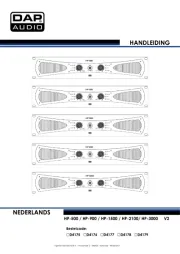
16 September 2025
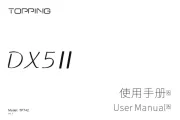
16 September 2025
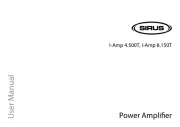
10 September 2025
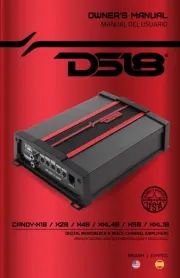
8 September 2025
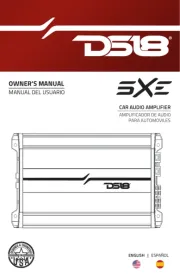
8 September 2025
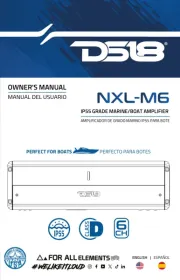
8 September 2025
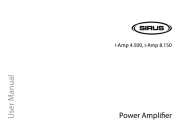
8 September 2025
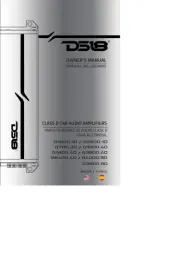
8 September 2025
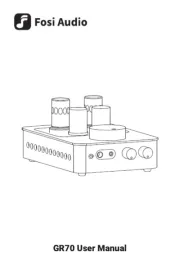
2 September 2025
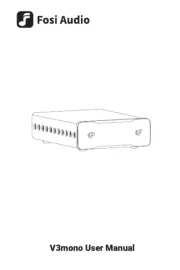
2 September 2025